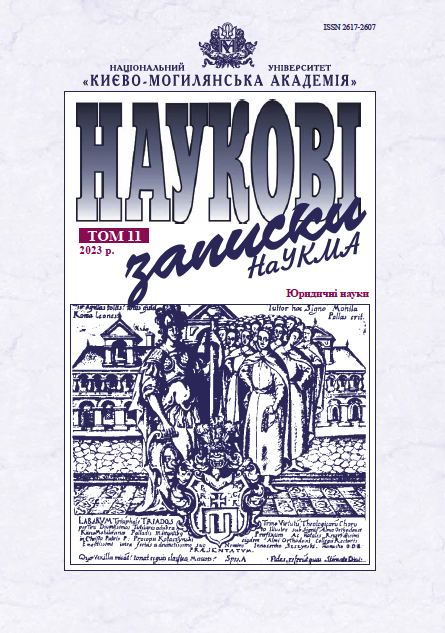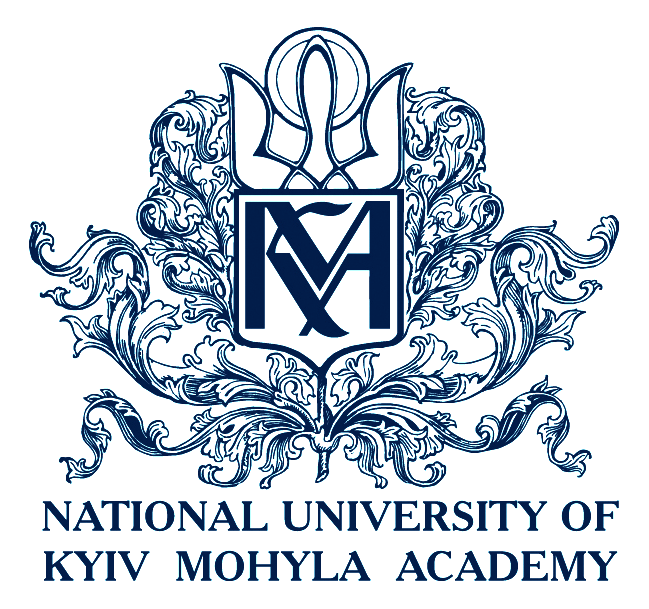Гегемонія керівної партії як спільний елемент у Вірменському геноциді, Голодоморі та Голокості
DOI:
https://doi.org/10.18523/2617-2607.2023.11.40-46Ключові слова:
Вірменський геноцид, Голодомор, Голокост, організатори злочину геноциду, гегемонія керівної партіїАнотація
З розвитком в останні десятиліття порівняльних геноцидних студій як другого покоління геноцидних студій важливо проаналізувати Голодомор як злочин геноциду, вчинений Комуністичною партією Радянського Союзу, у порівнянні з іншими геноцидами. У цій статті авторка пропонує порівняльний аналіз Голодомору з геноцидами першої половини ХХ ст., а саме Вірменським геноцидом Оттоманської імперії і Голокостом нацистської Німеччини з погляду їхніх виконавців (організаторів). Авторка порівнює ці три геноциди як злочини за міжнародним правом в аспекті одного із суб’єктивних елементів геноциду, що є характерним для кожного з них, зазначаючи схоже і відмінне в керівних політичних партіях як організаторах цих злочинів, які здійснили свій колективний намір у кожному з аналізованих геноцидів. Саме організатори злочину геноциду, які є лідерами керівних політичних партій, несуть основну відповідальність за злочин геноциду, оскільки їхня роль у поширенні геноцидного наміру визначальна порівняно з тими, хто знає про існування такого наміру і сприяє його втіленню.
Авторка доводить, що гегемонія керівної партії: ітихадистів, комуністів і нацистів, які підмінили собою державну організацію, була спільним елементом геноцидів в Оттоманській імперії, Радянському Союзі та Третьому Рейху. Нині аналогічною ідеологією є рашизм, який був засуджений постановою Верховної Ради України 2 травня 2023 р. як російський політичний режим, що характеризується такими соціальними практиками, як тоталітаризм і людиноненависництво.
На підставі проведеного аналізу авторка доходить висновку про те, що основним джерелом злочину геноциду можна визначити монопольні ідеології, а проаналізовані геноциди були передовсім ідеологічними. У тривалому російському геноциді проти української нації, кульмінація якого розпочалась 24 лютого 2022 р., знову наявна керівна партія «Єдіная Россія», яка створює фундамент російського тоталітарного режиму, що організував цей злочин. Геноцид українців з боку російського режиму, що триває досі, також має зазначений спільний елемент з іншими геноцидами – монопольну ідеологію, гегемонію керівної партії і тоталітаризм.
Посилання
- Adalian, Rouben Paul. “The Armenian Genocide.” In Century of Genocide. Critical Essays and Eyewitness Accounts. 3rd edition, edited by Samuel Totten and William S. Parsons, 55–92. New York and London: Routledge Taylor and Francis, 2009.
- Antonovych, Myroslava. “The Holodomor against the Ukrainian Nation in the Context of Genocides of the First Half of the XX century.” In Mizhnarodna Conferentsiya “Shtuchni Holody v Ukrayini XX stolittia”, 46–62. Kyiv: Vseukrayinska pravozakhysna orhanizatsiya “Memorial” imeni Vasylia Stusa, 2018.
- Antonovych, Myroslava. “Victims of genocides in the first half of the 20th century: comparative and legal analysis.” In Proceedings of the International Scientific-Educational Working Conference “Genocide-Holodomor 1932–1933: The Losses of the Ukrainian Nation, 71–3. Drohobych: National Museum “Holodomor Victims Memorial”, 2018.
- Antonovych, Myroslava. “Specific Intent (dolus specialis) in the Armenian Genocide, the Holodomor and the Holocaust: Comparative Analysis.” NaUKMA Research Papers. Law 3 (2019): 19–25. https://doi.org/10.18523/2617-2607.2019.3.19-25.
- Antonovych, Myroslava. “Individual and Collective Intent in the Crime of Genocide (on the Example of the Holodomor-Genocide against the Ukrainian Nation).” Actual Problems of International Relations 145 (2020): 54–61.
- Bartrop, Paul R., and Samuel Totten. “The History of Genocide: An Overview.” In The Genocide Studies Reader, edited by Samuel Totten and Paul R. Bartrop. New York and London: Routledge, 2009.
- Dadrian, Vahakn N. “Patterns of Twentieth Century Genocides: The Armenian, Jewish, and Rwandan Cases.” In Genocide and Mass Violence in the 20th and 21st Centuries: An Introduction. Criteria, Common Elements, and Patterns. Comparative Genocide Studies 1, edited by Christian P. Scherrer, 35–64. Moers: IFEK-IRECOR, 2005.
- Fein, Helen. Denying Genocide from Armenia to Bosnia: A Lecture Delivered at the London School of Economics and Political Science on 22 January 2001 (Occasional Papers in Comparative and International Politics 1). London School of Economics and Political Science, 2001.
- Glushko, Denys. “Ukrainian Parliament to Recognize Rashism as a Russian Political Regime.” Gwara Media. May 2, 2023. https://gwaramedia.com/en/ukrainian-parliament-to-recognizerashism-as-a-russian-political-regime/
- Jones, Adam. Genocide: A Comprehensive Introduction. London and New York: Routledge, 2006.
- Landau, Ronnie S. The Nazi Holocaust. Chicago, IL: Ivan R. Dee, 1994.
- Lemkin, Rafael. “Soviet Genocide in Ukraine.” In Rafael Lemkin. Soviet Genocide in Ukraine. Article in 28 languages, edited by Roman Serbyn. Kyiv: Maisternia Knyhy, 2009.
- Mace, James. “Soviet Man-Made Famine in Ukraine.” In Century of Genocide: Eye Witness Accounts and Critical Views, edited by Samuel Totten, William S. Parsons, Israel W. Charny, 95–126. New York: Garland Publishing, 1997.
- Mälksoo, Lauri. “Soviet Genocide? Communist Mass Deportations in the Baltic States and International Law.” Leiden Journal of International Law 14 (2001): 761–88.
- May, Larry. Genocide: A Normative Account. Cambridge University
- Press, 2010.
- Niewyk, Donald L. “Holocaust: The Genocide of the Jews.” In Century of Genocide: Eye Witness Accounts and Critical Views, edited by Samuel Totten, William S. Parsons, Israel W. Charny, 129–61. New York: Garland Publishing, 1997.
- Resolution of the CC AUCP(B) and CPC USSR on grain procurements in Ukraine, the North Caucasus and the Western Oblast. In Holodomor of 1932–33 in Ukraine. Excepts (2008), 65–8; In The Holodomor reader: a sourcebook on the Famine of 1932–1933 in Ukraine, compiled and edited by Bohdan Klid and Alexander J. Motyl, 245–7. Edmonton, Toronto: Canadian Institute of Ukrainian Studies Press, 2012.
- Ruling of the Kyiv-Court of Appeals concerning the committing of the crime of genocide, 13 January 2010. In The Holodomor of 1932–1933 in Ukraine as a Crime of Genocide under International Law, edited by Volodymyr Vasylenko and Myroslava Antonovych. Kyiv: Kyiv-Mohyla Academy Publishing House, 2016.
- Serbyn, Roman. “Holodomor: The Ukrainian Genocide.” Central and Eastern European Online Library PISM Series (PISM Series) 1 (2010): 205–230. https://www.ceeol.com/search/article-detail?id=86294, who cites Tragediia sovietskoi derevni: Kollektivizatsiia i raskulachivanie 1927–1939 gg: Dokumenty i materialy, vol. 3, 634–5. An English translation is in Martin Terry The Affirmative Action Empire: Nations and Nationalism in the Soviet Union, 1923–1939, 306–307. Ithaca, 2001.
- U.S. Commission on the Ukraine Famine. Report to Congress. Washington: US Government Printing Office, 1988.
##submission.downloads##
Опубліковано
Як цитувати
Номер
Розділ
Ліцензія
Авторське право (c) 2023 Myroslava Antonovych

Ця робота ліцензується відповідно до Creative Commons Attribution 4.0 International License.
Автори зберігають за собою авторські права на твір на умовах ліцензії Creative Commons Attribution 4.0 International License, котра дозволяє іншим особам вільно поширювати опублікований твір з обов’язковим посиланням на його авторів та його першу публікацію в цьому журналі.
Автори мають право укладати самостійні додаткові угоди щодо неексклюзивного поширення твору в тому вигляді, в якому його було опубліковано в журналі (наприклад, розміщувати роботу в електронному репозитарії установи або публікувати у складі монографії), за умови збереження посилання на його першу публікацію.
Політика журналу дозволяє розміщення авторами в мережі Інтернет (наприклад, у репозитаріях установ або на особистих веб-сайтах) рукопису роботи, як до подання його до редакції, так і під час його редакційного опрацювання, оскільки це сприяє виникненню продуктивної наукової дискусії та позитивно позначається на оперативності та динаміці цитування опублікованої роботи (див. The Effect of Open Access).



